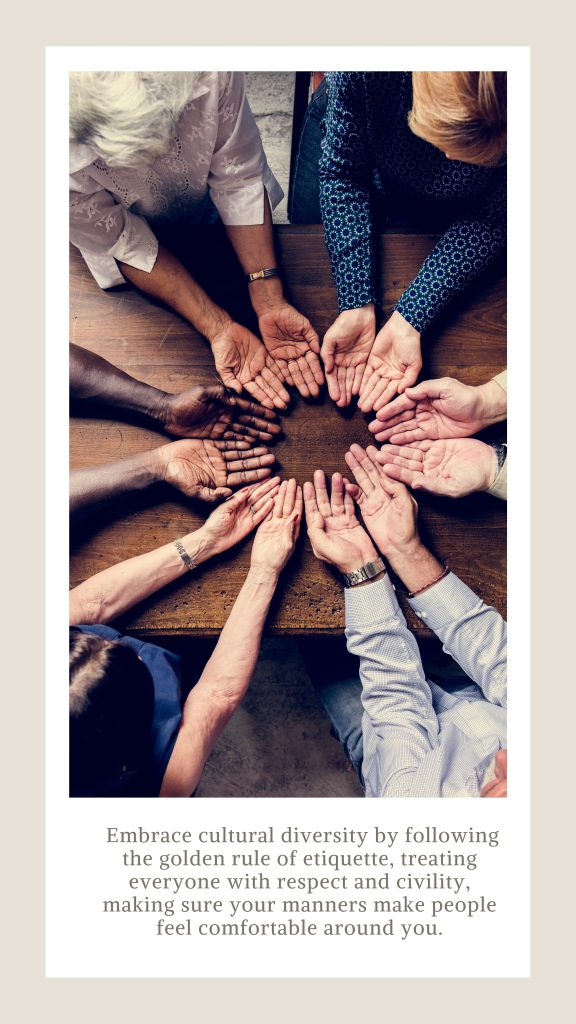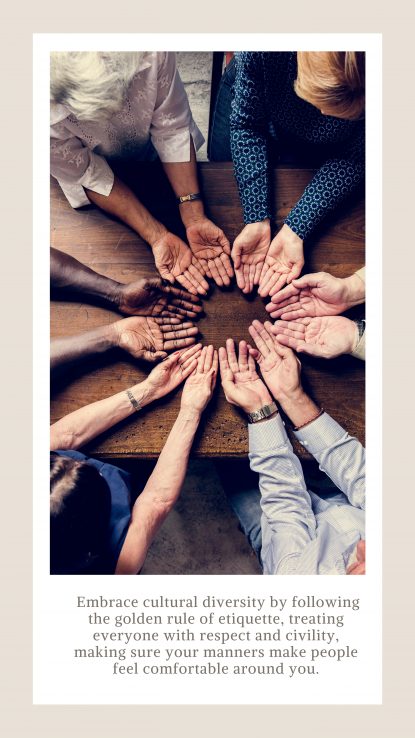Cultural Diversity – 6 Etiquette Tips
Mastering proper etiquette and manners make us more confident in handling a conversation and building relationships with people who do not share the same cultural background.
Embrace cultural diversity by following the golden rule of etiquette, treating everyone with respect and civility, making sure your manners make people feel comfortable around you.
1. Avoid words that could be easily misunderstood, such as jargon, jokes, sarcasm.
Also, stay away from controversial topics: politics, religion, or personal issues.
2. Avoid nonverbal communication, especially hand gestures.
For example, showing a thumb up is the universal gesture for Ok, Cool, or Great, but this gesture is considered a vulgar insult in some middle east countries.
3. Ask politely and show genuine interest in the culture of origin.
You can start the conversation talking about some historical sites you read about and ask if there are some exciting folklore stories about them. This way, you can open the discussion, and both sides can get involved.

4. Listen and talk slowly at a pace that the others can understand.
Talking with a foreigner, you should try speaking slowly, using simple words, and shortening sentences.
Listen carefully and do not correct or laugh at a foreigner who mispronounced your name or a word. Show empathy for the effort and value the message despite the mistakes made.
5. Choose your clothes carefully, especially if you are the one who visits a foreign country.
Do not wear leather for a trip to India, where cows are sacred animals. Hindus people consider leather products to be offensive.
Also, if you are a woman traveling to Japan, you should not wear skin-baring clothes. Revealing cleavage, armpits, or shoulders is considered extremely provoking. Consider covering your torso to avoid staring eyes and forming a negative opinion about you.
6. Know the appropriate greetings.
From kisses to hugs, handshakes, and bows, greetings are diverse as well as the cultures. Welcome a foreigner with a respectful greeting and make him or her feel comfortable and familiar with the gesture.
The most important aspect is to accept and embrace cultural differences showing respect to those who may stumble over the “norm of manners” because they have a different background than yours.








Comments